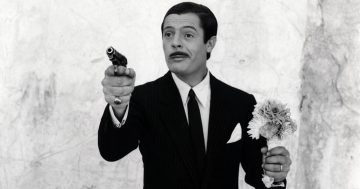Italian Neorealism
Film Art
We could make this publication thanks to small donations. How is 3 minutos de arte supported?
Italian Neorealism
Italian Neorealism is a movement that emerged during the Second World War in a devastated and starving Italy, which was horrified by so much human misery.
Even the film that is considered the great initiator of the movement, Rome, Open City (there were other earlier films that announced neorealism, but none was as neorealist as this one), was filmed during the last days of the German occupation of the city. In that film, a female character who betrays her beloved in favor of the Nazis says, “Life is filthy and brutal. I know what poverty is and it scares me.” Reality summarized in words.
The plot of a neorealist film unfolds in a reality where individuals are not having a good time, or are fighting to get out of a difficult situation.
The filmmaking is realistic, almost like a documentary: the scenery is natural, usually exterior shots, there are no film sets, the actors are intermingled with ordinary people; and the lighting is natural.
You can imagine how striking the contrast was with the traditional cinema that existed at the time. As a result, it became a revolutionary movement that impacted other movements as well as numerous filmmakers throughout history.
Budgets were kept to a minimum due to the economic situation. Besides, working with limited resources is appropriate for the realistic style. Art does not need to seek verisimilitude because it is simply the truth itself.
In many cases, the narration is not so much focused on a single protagonist. There are many characters, which could be defined as a rather choral narration. And as far as the acting is concerned, the aim is to be as natural as possible.
However, coming from a whole tradition of exaggerated, unnatural, and stereotyped performances, it is a big job for the directors to re-educate the actors in that sense. For this very reason, directors feel more comfortable working with new actors, who do not have great careers. So even low-class and less educated people who are not actors are cast in roles.
Neorealist filmmaking can be described as naturalistic. Naturalism in art, strives to depict human beings in their natural state, in real circumstances, with all their beauty and also their ugliness. Beyond the plot, there is testimony. The key word is “naturalness.”
Image: Final scene of Rome, Open City (Roma Città Aperta, Roberto Rosselini, 1945).
Representative films:
Obsession (Luchino Visconti, 1943)
Rome, Open City (Roberto Rossellini, 1945)
Paisà (Roberto Rossellini, 1946)
Shoeshine (Vittorio De Sica, 1946)
The Earth Trembles (Luchino Visconti, 1948)
Bicycle Thieves (Vittorio De Sica, 1948)
Rome 11:00 (Giuseppe de Santis, 1952)
Umberto D. (Vittorio De Sica, 1952)
Miracle in Milan (Vittorio De Sica, 1951)
The Layabouts (Federico Fellini, 1953)
La Strada (Federico Fellini, 1954)
Rocco and His Brothers (Luchino Visconti, 1960)
Recommended links:
The Golden Age of Hollywood (Classic Hollywood Cinema).
You can also find more material using the search engine.




0 Comments